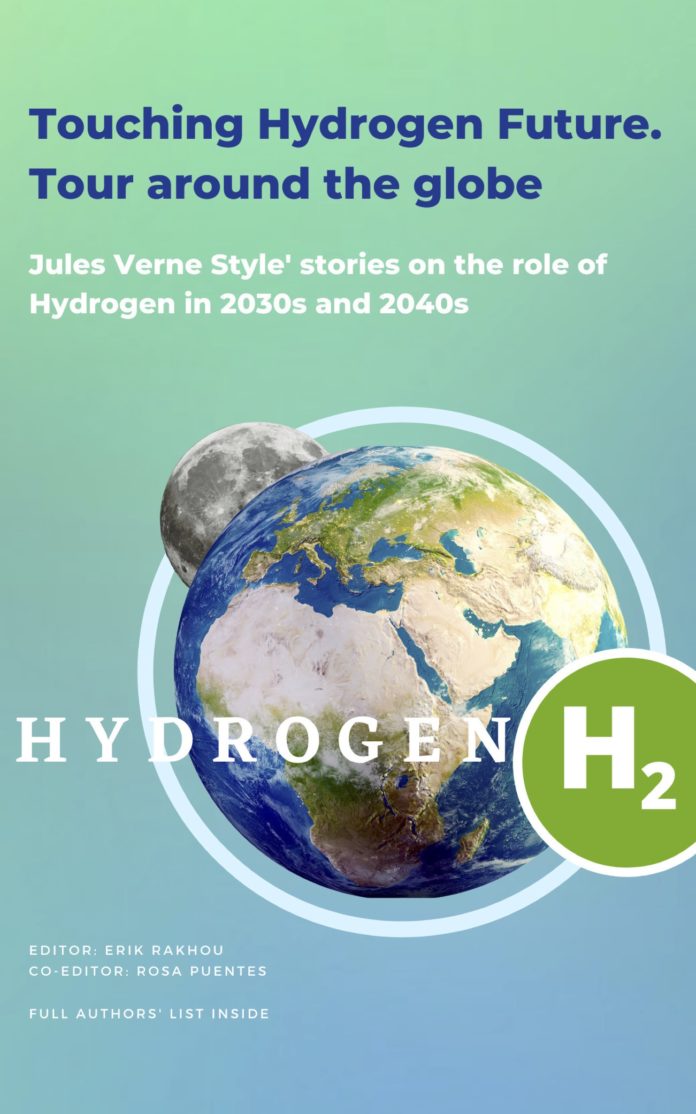]A new, free-to-read book, ‘Touching Hydrogen Future. Tour around the globe’, sets out the changes we can expect if hydrogen projects currently under consideration are successfully implemented. The foreword is from former EU Commissioner for Energy, Andris Piebalgs and then each of the book’s 27 chapters focuses on a specific country, providing a snapshot of hydrogen-powered life over the next twenty years. The book’s ‘hydrogen tour’ covers countries across six continents with insights from experts from every corner of the globe in a Jules Verne style odyssey.
The accounts the book provides are fictional, but the hydrogen technologies they reference are based on existing hydrogen projects and strategies. Hydrogen powered flights, shipping, road vehicles and factories are envisaged across the world, contributing to fighting climate change through carbon saving. Hydrogen, as a decisive decarbonization tool, contributes materially to reducing the total carbon footprint of the 27 countries covered by the book, which together account for 66% of global emissions.
Andris Piebalgs, former European Commissioner for Energy, said, “The book allows us to understand the gravity and complexity of the task in hand, with each country bringing its own opportunities, constraints, and positionality. Although the transition will be far from simple, requiring unprecedented efforts from governments, industry, and citizens, the tour shows the reader the truly exciting opportunities hydrogen offers for all nations. It is not just a fuel replacement, it is a paradigm shift in the way we look at energy systems, with co-benefits across a number of Sustainable Development Goals.”
Erik Rakhou, book initiator co-editor, said, “Almost 150 years after Jules Verne first envisaged a world powered by hydrogen, we can map out the changes it will enable within our lifetimes. Through the eyes of today’s energy leaders, we paint a picture of a transformed world powered by hydrogen alongside other energy transition vectors, and invite you to join us in building it.”




